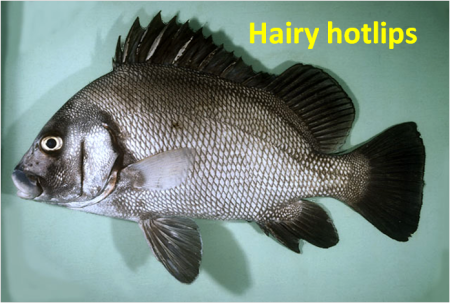Love is in the air...er...water...
 Friday, February 11, 2011 at 9:30AM
Friday, February 11, 2011 at 9:30AM  As we go into the season of that most manufactured of holidays - Valentine’s Day - I want to share with you a simple but powerful message. For every crazy sexual fantasy you have ever had, some creature in the oceans is already doing it. Whether it’s a solo effort, or a one on two, or a two on one, a three on six or a “countless hordes on untold numbers”, and whether it involves a he, a she, a male, a female, a shemale, or a whatthehellsisthat?, there’s already a species in the oceans to whom it’s old hat. And however kinky and twisted and perverted you can imagine, nature has already devised and instituted (often to ruthlessly efficient ends, I might add), something even more risque and alarming.
As we go into the season of that most manufactured of holidays - Valentine’s Day - I want to share with you a simple but powerful message. For every crazy sexual fantasy you have ever had, some creature in the oceans is already doing it. Whether it’s a solo effort, or a one on two, or a two on one, a three on six or a “countless hordes on untold numbers”, and whether it involves a he, a she, a male, a female, a shemale, or a whatthehellsisthat?, there’s already a species in the oceans to whom it’s old hat. And however kinky and twisted and perverted you can imagine, nature has already devised and instituted (often to ruthlessly efficient ends, I might add), something even more risque and alarming.
How do I know this? Well, a couple of years ago Georgia Aquarium asked my wife (who also works there) and I to come up with a talk we could give publically about love in the oceans. Sure! we said, No problem! It’ll be fun! Little did we guess the depths of smut and depravity to which the research of our newfound assignment would take us. But like good company minions, we answered the call, and now, three years later, the talk has become something of a regular thing. As an aside, I can tell you that our Googling efforts in support of the project attracted the attention of the IT department; I guess we typed in a few too many of the trigger words in the company internet filter - oops! We had to get special exceptions on my IP address so we could keep working (and I swear I have never used it since….ever).
OK, I’m talking a lot of smack. How about some concrete examples? Fair enough. How about this tiny snippet? Fairly self-explanatory; it’s exactly what it looks like. Needless to say, a warning that it’s NSFW.
That clear enough for you?
One of our favourite parts of the talk is an homage to George Carlin where Trish and I fire off ever-more suggestive fish names in rapid succession. There’s so many wonderful names to choose from, but some of my personal favourites are the cavernous assfish (this is actually the closely related abyssal assfish, I guess the cavernous assfish was just too embarrassed to have his photo taken):

Three related and almost identifical fish: the rode harder, the keep harder and the diklip harder (and yes, they are a type of mullet):

and how could I not include the hairy hotlips?

There’s dozens more, but to hear them (and see the rest of the walrus video) you’ll have to come to the talk.
In my final example, I want to claim some primacy over Ricky Gervais. You see, we were talking about blowhole sex in boto dolphins long before he put it into his act. That’s right, lonely male botos will, from time to time, penetrate each other in the blowhole, which is really a nostril. Nasal: its the new anal…
And thats just the beginning. Cross-dressing, orgies, role playing, dom-sub BDSM, genital mutilation, piquerism, even post-coital cannibalism, its all going on every day in the oceans (and you’re swimming in it!). So, next time you’re blushing at the thought of some new saucy idea that sneaks into your mind sideways when you should really be working on TPS reports, just relax, we humans are actually kind of vanilla.



